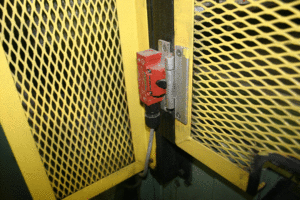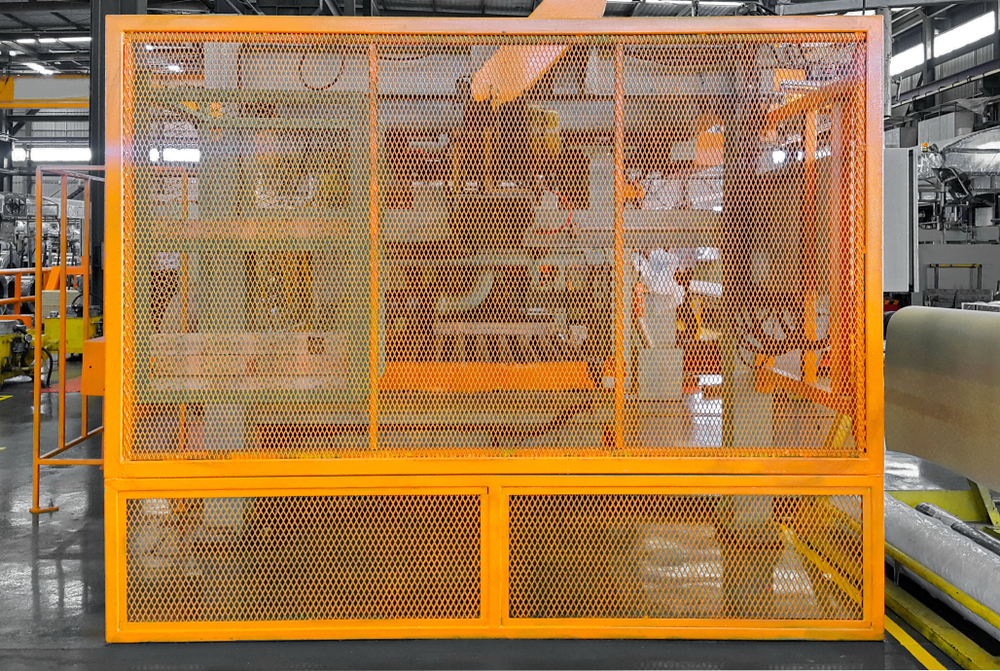In the first blog in this series, we discussed the story behind the CE mark, the Machinery Directive, and the associated requirements regarding the design, production, and sale of machinery bearing the mark. The second blog discussed a cornerstone of safer machine design, the risk assessment. This installment will discuss another crucial piece of the safety puzzle, machine guard design.
In part two we noted that the Machinery Directive Annex I, Essential Health and Safety Requirements, Article 1.4 REQUIRED CHARACTERISTICS OF GUARDS AND PROTECTIVE DEVICES, Section 1.4.1 General requirements states:
“Guards and protective devices must:
- be of robust construction,
- be held securely in place,
- not give rise to any additional hazard,
- not be easy to by-pass or render non-operational,
- be located an adequate distance from the danger zone,
- cause minimum obstruction to the view of the production process, and
- enable essential work to be carried out on the installation and/or replacement of tools and for maintenance purposes by restricting access exclusively to the area where work has to be done, if possible without the guard having to be removed or the protective device being disabled.”
The Type B standard, ISO 14120 Safety of machinery – Guards – General requirements for the design and construction of fixed and movable guards, gives detailed design considerations for the selection, design, and construction of guards. In a number of accidents that I have investigated, a guard was present but was not adequate, and an injury resulted.
After a thorough risk assessment of the machinery has determined the need for guarding, the selection of the type of guard can begin with guidance from the standard. Section 6 Selection of types of guards, 6.1 General states:
“If the risk assessment has established a requirement for guards, they shall be selected in accordance with the following guidelines and Annex A (see also ISO 12100).
In selecting suitable guards, the appropriate phases of the life of the machinery (as defined in ISO 12100) shall be considered.
The most important selection criteria are:
- the probability and foreseeable severity of any injury as indicated by the risk assessment;
- the intended use of the machine as defined in ISO 12100;
- the hazards present at the machine (see clause 4 and clause 5 and ISO 12100);
- the nature and frequency of the access.”
Let’s look a little closer at these important selection criteria. The first criteria is the probability and severity of the injury as determined by the risk assessment. If a person or part of a person is allowed into a specific area, how likely is harm? Is injury or harm almost certain with no means for escape or is injury very unlikely and only in special conditions? The complexity and sophistication of the guard(s) selected will be shaped by this crucial consideration.
The second criteria is the intended use of the machine. ISO 14120 section 5.2.6 Intended use states, “Guards shall be designed so far as is practicable to take into account foreseeable use and reasonably foreseeable misuse.” The following is an excellent example of how the standards are complementary. In ISO 12100, “intended use” is defined as “use of a machine in accordance with the information for use provided in the instructions”. The term “reasonably foreseeable misuse” is defined by ISO 12100 as “use of a machine in a way not intended by the designer, but which can result from readily predictable human behavior”. Appendix B of the standard contains several specific examples for consideration.
The third criteria is the hazards present at the machine. Here ISO 12100 Annex B provides an excellent list of hazards to consider. Table B.1 provides hazards for consideration by group, including:
- mechanical hazards
- electrical hazards
- thermal hazards
- noise hazards
- vibration hazards
- radiation hazards
- material/substance hazards
- ergonomic hazards
- hazards associated with the environment in which the machine is being used
- the combination of hazards
This list is a very thorough starting point for the analysis of hazards.
The fourth criteria is the nature and frequency of the access. Fixed guards should be considered for their simplicity and reliability if access is not required during use of the machine. But what if access is required during use such as for machine correction, machine setting, or maintenance? In these instances, a moveable guard might be considered if the need for access is frequent. ISO 12100, 6.4.3.1 Selection of guards according to the nature and frequency of access required provides criteria for type of guard required. If access is not required during use, fixed guards should be used due to simplicity and reliability. Section 6.4.3 covers when access is required during use, for example machine setting, process correction or maintenance. A movable guard should be used if access is needed often, for example more than once per shift, or if removal or replacement of a fixed guard would be difficult. Fixed guards should be utilized only if access is occasionally needed, otherwise they are likely to be removed and not replaced. Interlocks or guard locking are valuable safety features when movable guards are used to help prevent injury.
How do we know that a guard of a given design will keep a person a safe distance from the danger zone? There are more harmonized standards for that as well. ISO 13852 Safety of machinery – Safety distances to prevent danger zones being reached by the upper limbs and ISO 13854 Safety of machinery – minimum gaps to avoid crushing of parts of the human body provide a good framework to start the design from.
While this blog merely scratches the surface of the deep subject of machine guarding, it should be clear that many considerations are involved in proper design. And the two little letters, CE, require this rigorous process to earn the mark.
Chad Jones, PE, CMSE, CFEI has a Bachelor of Science in Mechanical Engineering from Clemson University. Chad has over 20 years of engineering experience including mechanical, process, and manufacturing engineering. This work has included equipment design, machine safeguarding, cost estimating and safety compliance. Chad also has over 10 years of commercial, industrial, and residential HVAC and plumbing design experience. Chad is a Certified Fire and Explosion Investigator and IFSAC certified Firefighter II in Greenwood County, South Carolina.





